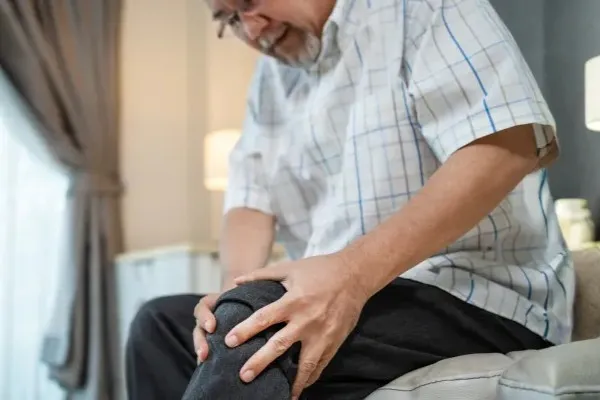Topics
Diabetic foot ulcers are a serious and common complication of diabetes that can lead to significant health consequences if not treated properly. These open wounds or sores usually occur on the bottom of the foot and are often the result of nerve damage or poor circulation. Without proper care, diabetic foot ulcers can progress quickly, potentially leading to infections or even amputation.
Early intervention and proper wound care can greatly reduce the risks. That is why knowing how to manage diabetic foot ulcers at home, while staying in touch with healthcare professionals, is essential. At Gleneagles Hospitals, patients receive holistic and individualised care, including education and support to manage diabetes-related complications effectively.
What Are Diabetic Foot Ulcers?
Diabetic foot ulcers are open sores or wounds that most often develop on the bottom of the foot in people with diabetes. These ulcers are not just surface-level injuries, they often penetrate deeper tissues, including skin, muscle, and bone. They are one of the most common reasons for diabetes-related hospitalisations (Lekka, 2023).
Causes of Diabetic Foot Ulcers
Diabetic foot ulcers are typically caused by a combination of factors:
Nerve Damage
Peripheral neuropathy leads to loss of sensation in the feet, so individuals may not feel pain from minor injuries or pressure.
Poor Circulation
Reduced blood flow to the lower limbs makes it harder for wounds to heal.
High Blood Sugar Levels
Uncontrolled diabetes impairs the immune system and healing processes.
Foot Deformities
Structural issues like bunions or hammertoes can cause uneven pressure points.
Inadequate Footwear
Shoes that are too tight or do not provide support can cause blisters that develop into ulcers.
How Can You Care for Diabetic Foot Ulcers at Home?
Caring for diabetic foot ulcers at home is essential to support healing, prevent infection, and avoid complications like amputation. However, home care should always be done under the guidance of a healthcare professional. Proper at-home care plays a key role in healing and preventing complications.
Clean the Wound Daily
Use saline or an antiseptic solution to gently clean the ulcer. Avoid using harsh chemicals like hydrogen peroxide, which can damage tissue.
Apply Medicated Dressings
Use prescribed dressings that promote moisture balance and prevent infection. Change dressings as advised by your doctor.
Avoid Pressure on the Affected Foot
Limit walking or standing for long periods. Use offloading devices like diabetic shoes or orthotic inserts.
Monitor Blood Sugar Levels
Keeping your blood sugar within target range supports faster wound healing and reduces infection risk.
Inspect Feet Daily
Check for new blisters, redness, swelling, or changes in skin temperature. Use a mirror or ask a caregiver for help.
Stay Hydrated and Eat a Balanced Diet
Proper nutrition, including protein, vitamins, and minerals, aids the body’s natural healing.
When Should You See a Doctor?
Even with proper at-home care, professional medical evaluation is crucial. Seek prompt medical attention if you notice signs of infection or worsening symptoms (Pagán, 2024).
Signs of Infection
Redness, swelling, warmth, and foul-smelling discharge may indicate infection.
Fever and Chills
These symptoms suggest a systemic infection and require immediate care.
Increased Pain
A worsening ulcer might cause more pain, even if you previously had reduced sensation.
Discolouration of Skin or Tissue
Darkening of the skin around the ulcer can signal poor blood flow or tissue death.
How Can You Prevent Diabetic Foot Ulcers?
Prevention is always better than cure, especially for chronic conditions like diabetes. Adopting daily foot care and healthy lifestyle habits can significantly reduce your risk of developing diabetic foot ulcers..
Control Blood Sugar Levels
Keeping blood glucose levels stable lowers the risk of nerve damage and poor circulation.
Wash Your Feet Daily
Use warm (not hot) water and mild soap. Dry thoroughly, especially between toes.
Wear Proper Footwear
Choose comfortable, well-fitting shoes that protect the feet and reduce pressure points.
Conduct Daily Foot Checks
Check both feet every day for cuts, blisters, redness, or swelling.
Moisturise Regularly
Apply lotion to prevent dryness and cracking, but avoid applying between the toes.
Schedule Regular Check-Ups
Schedule regular check ups with your doctor.
Frequently Asked Questions
1. What are the first signs of a diabetic foot ulcer?
The earliest signs include redness, swelling, warmth, and the formation of a small blister or sore on the foot. Patients with neuropathy may not feel any pain initially.
2. Can diabetic foot ulcers heal completely?
Yes, with early detection and proper treatment, many diabetic foot ulcers can heal fully. However, healing time varies depending on severity and blood sugar control.
3. How often should I change the dressing on my foot ulcer?
Follow your healthcare provider’s instructions. Generally, dressings are changed once a day or more often if they become wet or soiled.
4. Is walking bad for diabetic foot ulcers?
Walking or putting pressure on an ulcer can delay healing. It is best to use offloading footwear or follow bedrest recommendations from your doctor.
5. What happens if I ignore a diabetic foot ulcer?
Ignoring a foot ulcer can lead to serious complications such as infection, gangrene, and even amputation. Early treatment is essential to prevent long-term damage.
Book an Appointment at Gleneagles Hospitals
Diabetic foot ulcers are a serious health concern that require timely intervention, proper home care, and ongoing medical support. Managing diabetes effectively, maintaining proper foot hygiene, and recognising the signs of complications can greatly improve outcomes.
At Gleneagles Hospitals, our multidisciplinary team of endocrinologists, vascular surgeons, and wound care specialists provide personalised care plans for patients with diabetic foot ulcers.
Do not wait. Book your appointment today and start your journey toward better health. Our team is here to support you every step of the way. You may also book an appointment via our website or download the MyHealth360 application from the Google Play Store or Apple App Store.








